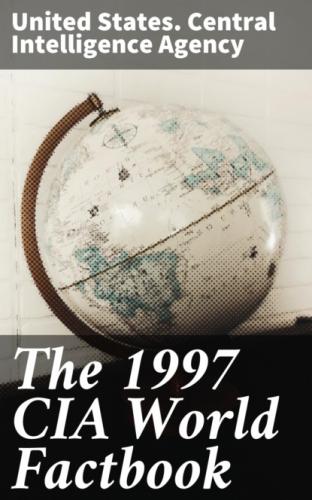Industrial production growth rate: NA%
Electricity - capacity: 35,000 kW (1992)
Electricity - production: 140 million kWh (1992)
Electricity - consumption per capita: NA kWh; note - Andorra exports most of its electricity to France and Spain
Agriculture - products: small quantities of tobacco, rye, wheat, barley, oats, vegetables; sheep raising
Exports: total value : $47 million (f.o.b., 1995) commodities: electricity, tobacco products, furniture partners : France 49%, Spain 47%
Imports: total value: $1 billion (1995) commodities: consumer goods, food partners: France, Spain, US 4.2%
Debt - external: $NA
Economic aid: none
Currency: 1 French franc (F) = 100 centimes; 1 peseta (Pta) = 100 centimos; the French and Spanish currencies are used
Exchange rates: French francs (F) per US$1 - 5.4169 (January 1997), 5.1155 (1996), 4.9915 (1995), 5.5520 (1994), 5.6632 (1993), 5.2938 (1992); Spanish pesetas (Ptas) per US$1 - 134.77 (January 1997), 126.66 (1996), 124.69 (1995), 133.96 (1994), 127.26 (1993), 102.38 (1992)
Fiscal year: calendar year
@Andorra:Communications
Telephones: 21,258 (1983 est.)
Telephone system: domestic : modern system with microwave radio relay connections between exchanges international: landline circuits to France and Spain
Radio broadcast stations: AM 1, FM 0, shortwave 0
Radios: 10,000 (1993 est.)
Television broadcast stations: 0
Televisions: 7,000 (1991 est.)
@Andorra:Transportation
Railways: 0 km
Highways: total: 269 km paved: 198 km unpaved : 71 km (1991 est.)
Ports and harbors: none
Airports: none
Military
Military - note: defense is the responsibility of France and Spain
Transnational Issues
Disputes - international: none ______________________________________________________________________
ANGOLA
Introduction
Current issues: Civil war has been the norm since independence from Portugal on 11 November 1975. A cease-fire lasted from 31 May 1991 until October 1992 when the insurgent National Union for the Total Independence of Angola (UNITA) refused to accept its defeat in internationally monitored elections and fighting resumed throughout much of the countryside. The two sides signed another peace accord on 20 November 1994 and the cease-fire is generally holding, but military tensions persist and banditry is increasing. In order to bring armed insurgents under government control the peace accord of 20 November 1994 provided for the integration of former UNITA insurgents into the Angolan armed forces. Military integration began in June 1996 and a Government of National Unity and Reconciliation was installed in April 1997. Efforts which began in May 1997 to extend government into UNITA-occupied areas are proceeding slowly. The original 7,200-man UN peacekeeping force began a phased drawdown in late 1996. All UN peacekeepers are scheduled to depart by September 1997 but a small UN military observer force will probably remain in Angola through 1998.
@Angola:Geography
Location: Southern Africa, bordering the South Atlantic Ocean, between
Namibia and Democratic Republic of the Congo
Geographic coordinates: 12 30 S, 18 30 E
Map references: Africa
Area: total: 1,246,700 sq km land : 1,246,700 sq km water: 0 sq km
Area - comparative: slightly less than twice the size of Texas
Land boundaries: total: 5,198 km border countries: Democratic Republic of the Congo 2,511 km of which 220 km is the boundary of discontiguous Cabinda province, Republic of the Congo 201 km, Namibia 1,376 km, Zambia 1,110 km
Coastline: 1,600 km
Maritime claims: exclusive fishing zone: 200 nm territorial sea: 20 nm
Climate: semiarid in south and along coast to Luanda; north has cool, dry season (May to October) and hot, rainy season (November to April)
Terrain: narrow coastal plain rises abruptly to vast interior plateau
Elevation extremes: lowest point: Atlantic Ocean 0 m highest point: Morro de Moco 2,620 m
Natural resources: petroleum, diamonds, iron ore, phosphates, copper, feldspar, gold, bauxite, uranium
Land use: arable land: 2% permanent crops: 0% permanent pastures: 23% forests and woodland: 43% other : 32% (1993 est.)
Irrigated land: 750 sq km (1993 est.)
Natural hazards: locally heavy rainfall causes periodic flooding on the plateau
Environment - current issues: the overuse of pastures and subsequent soil erosion attributable to population pressures; desertification; deforestation of tropical rain forest, in response to both international demand for tropical timber and to domestic use as fuel, resulting in loss of biodiversity; soil erosion contributing to water pollution and siltation of rivers and dams; inadequate supplies of potable water
Environment - international agreements: party to: Law of the Sea signed, but not ratified: Biodiversity, Climate Change, Desertification
Geography - note: Cabinda is separated from rest of country by Congo
(Kinshasa)
@Angola:People
Population: 10,548,847 (July 1997 est.)
Age structure: 0–14 years: 45% (male 2,393,009; female 2,327,186) 15–64 years: 52% (male 2,793,038; female 2,753,624) 65 years and over: 3% (male 131,720; female 150,270) (July 1997 est.)
Population growth rate: 3.06% (1997 est.)
Birth rate: 44.11 births/1,000 population (1997 est.)
Death rate: 17.24 deaths/1,000 population (1997 est.)
Net migration rate: 3.69 migrant(s)/1,000 population (1997 est.)
Sex ratio: at birth : 1.05 male(s)/female under 15 years: 1.03 male(s)/female 15–64 years: 1.01 male(s)/female 65 years and over: 0.88 male(s)/female total population : 1.02 male(s)/female (1997 est.)
Infant mortality rate: 135.7 deaths/1,000 live births (1997 est.)
Life expectancy at birth: total population : 47.32 years male: 45.12 years female: 49.64 years (1997 est.)
Total fertility rate: 6.27 children born/woman (1997 est.)
Nationality: noun: Angolan(s) adjective: Angolan
Ethnic groups: Ovimbundu 37%, Kimbundu 25%, Bakongo 13%, mestico (mixed European and Native African) 2%, European 1%, other 22%
Religions: indigenous beliefs 47%, Roman Catholic 38%, Protestant 15% (est.)
Languages: Portuguese (official), Bantu and other African languages
Literacy: definition: age 15 and over can read and write total population: 42% male : 56% female: 28% (1990 est.)
@Angola:Government
Country name: conventional long form : Republic of Angola conventional short form: Angola local long form: Republica de Angola local short form: Angola former: People's Republic of Angola
Data code: AO
Government
